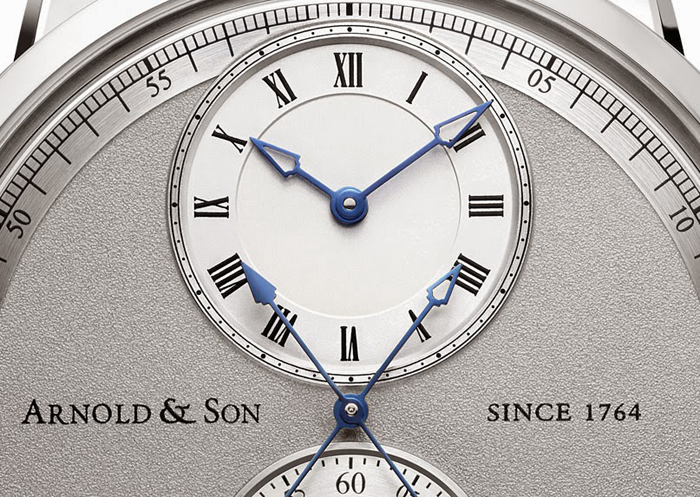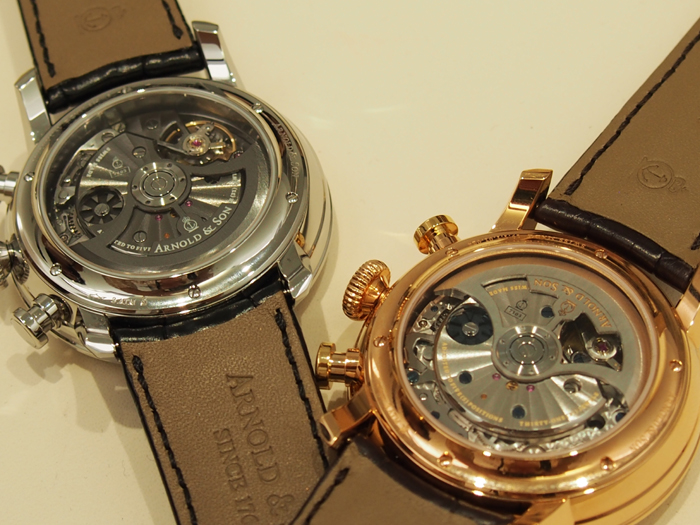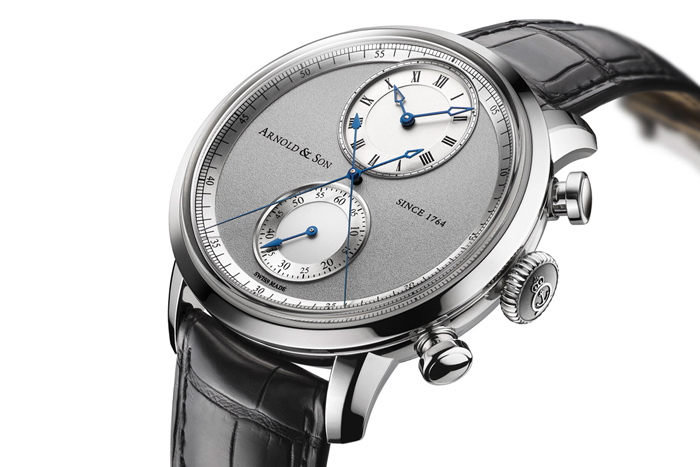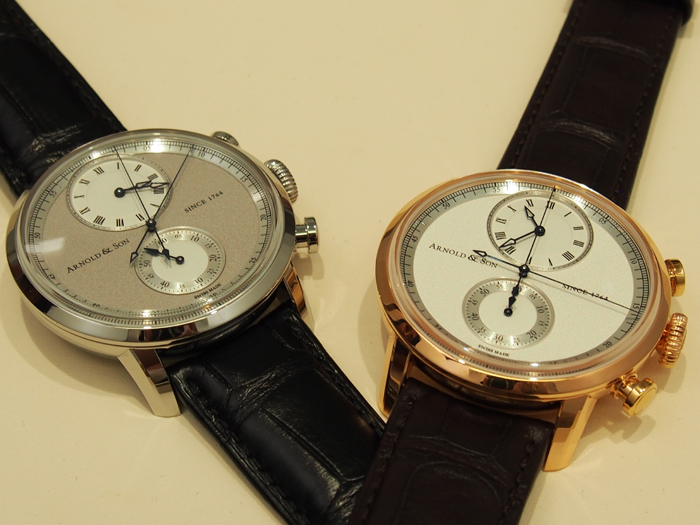We’ve written about Arnold & Son time and again here, as this is a brand we truly respect. Here, we reflect on what Arnold & Son has achieved this year with its newest introductions, watches that are just starting to hit the markets this summer. These complexities created with superb craftsmanship celebrate the brand’s 250th anniversary.
 The world premiere CTB. Part of the brand’s Instrument collection, the CTB (Central True Beat) Chronograph houses a proprietary in-house manufactured movement and represents a World’s First in a wrist watch: a chronograph with a central true beat seconds hand. Achieved by incorporating a central true beat seconds hand and a central chronograph seconds hand — both on the same axis but with different jumping intervals – the watch is protected by two patents.
The world premiere CTB. Part of the brand’s Instrument collection, the CTB (Central True Beat) Chronograph houses a proprietary in-house manufactured movement and represents a World’s First in a wrist watch: a chronograph with a central true beat seconds hand. Achieved by incorporating a central true beat seconds hand and a central chronograph seconds hand — both on the same axis but with different jumping intervals – the watch is protected by two patents.
Sometimes referred to as a dead beat seconds, the true beat seconds is a precision function wherein the seconds beat incrementally as opposed to sweeping along the dial – allowing for more accurate reading. To accomplish this function in and of itself is no easy feat. However, Arnold &Son has taken the idea to new heights by incorporating the true beat seconds on the same axis as the chronograph seconds hand. The result, when the continually running chronograph hand is started, is visually amazing. It gives the impression that it can catch up to the true beat seconds hand, but this never happens since the true beat seconds hand jumps away each second in a delightful and entrancing game of cat and mouse.
 The A&S 7103 caliber is a proprietary mechanical self-winding movement with column-wheel operated chronograph. The movement is configured to give optimum balance and beauty to the dial, with off-centered hour and minutes at 12 o’clock, big central true beat seconds and central chronographs seconds, and 60-minutes chronograph indicator at 6 o’clock. The 31-jewel movement beats at 28,800 vibrations per hour and offers more than 50 hours of power reserve. This world’s-first timepiece also offers the efficiency of bi-directional winding thanks to ceramic ball bearings.
The A&S 7103 caliber is a proprietary mechanical self-winding movement with column-wheel operated chronograph. The movement is configured to give optimum balance and beauty to the dial, with off-centered hour and minutes at 12 o’clock, big central true beat seconds and central chronographs seconds, and 60-minutes chronograph indicator at 6 o’clock. The 31-jewel movement beats at 28,800 vibrations per hour and offers more than 50 hours of power reserve. This world’s-first timepiece also offers the efficiency of bi-directional winding thanks to ceramic ball bearings.







